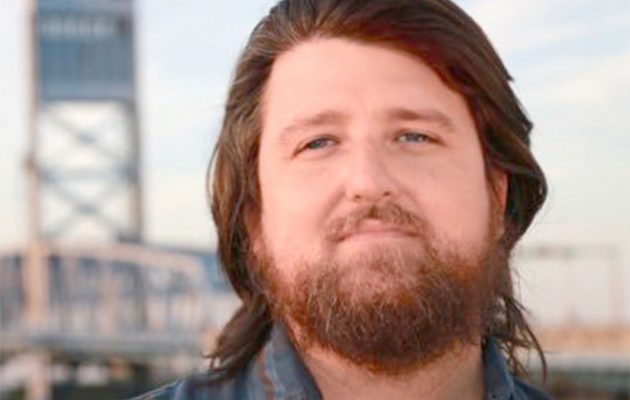Secret Jacksonville: A Guide to the Weird, Wonderful and Obscure

An interview with the author, Mr. Delaney
Jacksonville’s urban revitalization is underway and gaining momentum. This is evident in the growing high rise apartment buildings in Brooklyn, Riverside, and Murray Hill; restoration of historic landmarks, such as Renaissance Revival landmark Cowford Chophouse building; and renewed interest in connecting communities by pedestrian and bike pathways, such as the Emerald Trail project. Redevelopment of historic areas, such as Riverside, is an intricate balancing act that includes preservation of architectural heritage of existing significant buildings and streets, while encouraging investments in new residential construction to support population growth. The uniqueness of Jacksonville urban core, specifically Riverside, is the product of its rich history, geographical location, and local policymakers’ vision. To better understand the Jacksonville urban core’s journey and what lies on its horizon, I interviewed Bill Delaney, author of the book Secret Jacksonville: A Guide to the Weird, Wonderful and Obscure.
QUESTION
What was your motivation for writing your book “Secret Jacksonville?
MR. BILL DELANEY: I was approached by my publisher. They do similar books like this in other cities. They had been doing them in bigger cities and they wanted to start branching out into more mid-sized cities.They had success with another writer who had written a different book about Jacksonville and it sold well, so they wanted to do one on the hidden secrets and local lore. I jumped at the chance when they called me because that’s the kind of thing that I liked to research whether I am writing a book or not. It kind of gave me an excuse to get out there and dig into some of the stories, even things I knew already. I asked my friends and colleagues for recommendations and some of the time my wife and I went out and saw what we could find.
JM: What was your research and writing process like?
BD: First I made up a big list of things that I wanted to include. I ended up with twice as much as I could fit so I had to cut a lot. Having such a big list, I was able to triage what I wanted to include in the book. It was important to me to get things in every section of our region to get enough representation of northwest Jacksonville and the northside, and not just the downtown area and the beach. After that, essentially I just picked things and tried to get them where they were close together. I would do the research and get the pictures and spend a couple of days researching. Once, I took one weekend and I rented an AirBnB out on the Trout River and spent the entire weekend writing. The research took a year, the writing only took about two months.
JM: Why do you think it’s important for people to learn about the history of their community?
BD: When you learn the history of the area around you, it gives you a sense of connection not only to that specific place, but to other places that are like it. It gives you more of a background of the people who lived there before and the ways that different neighborhoods grow differently. You learn that even when you are in a place that may not on the surface look like a unique place, it will have a combination of lots of different factors that combine to make it a unique place.
JM: What do you think makes Riverside unique?
BD: Riverside has benefitted from a series of development patterns that have made it what it is today. It started as a streetcar suburb meaning that people could connect to downtown easily and live here. It grew through an urban development pattern meaning it is very walkable and very centered. There are commercial strips that are embedded into the neighborhood. It also had the good fortune of in the 1950s-60s when a lot of people from urban neighborhoods started moving into the suburbs during white flight, black flight, just general suburbanization, Riverside’s prices dropped. Then there was a combination of really cool and useful architecture and cheap prices that attracted artists, bohemians, musicians, and the LGBTQ+ community. That’s what makes it such a special neighborhood.
JM: What improvements would you like to see in Riverside?
BD: I would like to see it be better connected to the surrounding neighborhoods and kind of rebuild the connection that has been cut off by highways and historical development patterns so it can have a more seamless connection to Brooklyn, downtown, and Murray Hill, Lackawanna, and all the places around it. I also think that this area needs more housing. They need to do a better job of balancing the addition of more housing and the preservation of the neighborhood before everybody gets priced out.
JM: What do you think contributes to the diversity of the architecture in Riverside?
BD:The reason the architecture is the way that it is is that it grew up over such a long time in different spurts. It primarily grew up over the 1920s. There are some houses that are older than that. In the 1920s, people embraced many different styles. You also had a lot of different people interested in moving [to Riverside]. The wealthier section was closer to the river, there were more middle-class sections farther from the river; those were both whites-only neighborhoods. The African-American neighborhoods were farther inland. There were a lot of different people, price points, interests, and needs. It was before people had thought of cookie-cutter houses, so they built [houses] to what the standard was at the time for a style they liked: craftsman cottages, bungalows, quadruplexes, duplexes, and big mansions.
By Jessica Malosh
Resident Community News




 (2 votes, average: 4.50 out of 5)
(2 votes, average: 4.50 out of 5)

